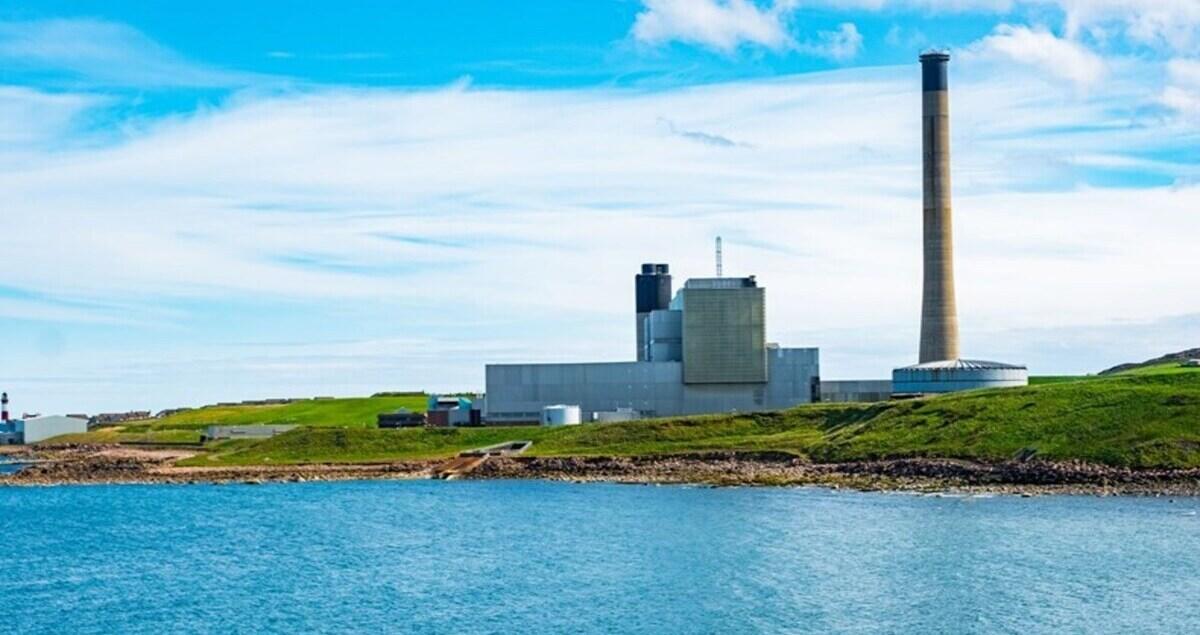Scotland: A low-carbon energy hub in the making

Scotland evokes notions of rugged landscapes, lush meadows and roaming Highland cattle.
But it could soon become a key hub for low-carbon technologies, including renewable energies such as offshore wind, hydrogen and carbon dioxide capture, utilization and storage (CCUS).
A gas power plant in Aberdeen is one of the trailblazers for Scotland’s energy future.
Scotland’s energy heritage: From coal to low-carbon energy
For close to two centuries, Scotland has been known not just for its natural beauty but also for its engineering, mining, steel and textiles industries. And for the better part of that time, they were all powered by coal. An enormous coal mining operation supported Scotland’s industrialization until well into the 1950s, when the energy focus shifted to offshore oil and gas. But coal continued to play a role, not least in power generation.
In December 2021, Scotland’s last coal-fired power plant was blown up, marking the end of coal power in the country. This was one high-profile symbol of the Scottish government’s commitment to the energy transition. The other is the Peterhead Power Station in Aberdeenshire, which is now at the heart of government initiatives to transition away not only from coal but from oil and gas, too.
CCUS helps ready an old power plant for low-carbon future
At Peterhead, Mitsubishi Heavy Industries (MHI) Group has teamed up with engineering partners Worley and Técnicas Reunidas to deliver a Front End Engineering and Design program for a carbon capture power station. The project, led by energy companies SSE Thermal and Equinor, could become Scotland’s first commercial-scale CO₂ capture and storage (CCS) facility at a gas turbine combined cycle (GTCC) plant.
MHI’s Advanced KM-CDR Process, developed with Kansai Electric Power Company, can extract more than 90% of all carbon dioxide emissions from fossil fuel-fired power generation and industry before they hit the atmosphere.
At Peterhead, the captured CO₂ would be piped away through repurposed gas pipelines and stored offshore in rock formations below the North Sea. The plant is expected to capture up to 1.5 million tonnes per annum of CO₂. The nearby undersea storage capacity is an estimated 150 million tonnes.

Applying Scottish industrial heritage to low-carbon energy
The plant will be part of a net zero Energy Transition Zone (ETZ) in the harbor area of Aberdeen, focused on commercializing offshore wind generation, hydrogen and CCUS. The Scottish government has thrown its weight and £26 million ($31.5 million) in funding behind the ETZ as part of its £62 million Energy Transition Fund.
Scotland is aiming to reach net zero by 2045.
In 2021, the last year the government has reported on, 85% of all electricity used and 88% of all electricity generated in Scotland was from low-carbon sources, including renewables. That is a significant advance from 2011, when renewables covered only 37% of national demand.
The energy transition is viewed not only as a must-have for stopping climate change. It is also seen as an opportunity to revive the local economy and apply Scotland’s industrial heritage in a new way: the ETZ is expected to create 2,500 green jobs and 10,000 related roles.

Renewable energy clusters unite
The ETZ is just one of many examples of Scotland and the UK paving the way for the energy transition. These include a series of zero carbon clusters along the coastlines of England, Wales and Scotland. For example, MHI is working with Drax on developing CCUS for a biomass power plant at the Zero Carbon Humber cluster in northern England.
The UK is not alone in its focus on CCUS. Around the world, pilot projects and commercial rollouts have been ramping up in recent years, across both power generation and heavy CO₂ emitters in industry. According to the Global CCS Institute, the world is heading towards having close to 200 commercial CCUS projects worldwide, with combined capacity of 244 million tonnes per annum. This includes 30 that are already in operation, with the remainder under construction or in development.
CCUS has long been in the shadow of renewable energy. But the International Energy Agency has stated that reaching net zero by 2050 will be virtually impossible without CCUS. This underscores the importance of local projects such the plant at Peterhead for global climate change abatement.
Discover more about MHI’s activities in CCUS





